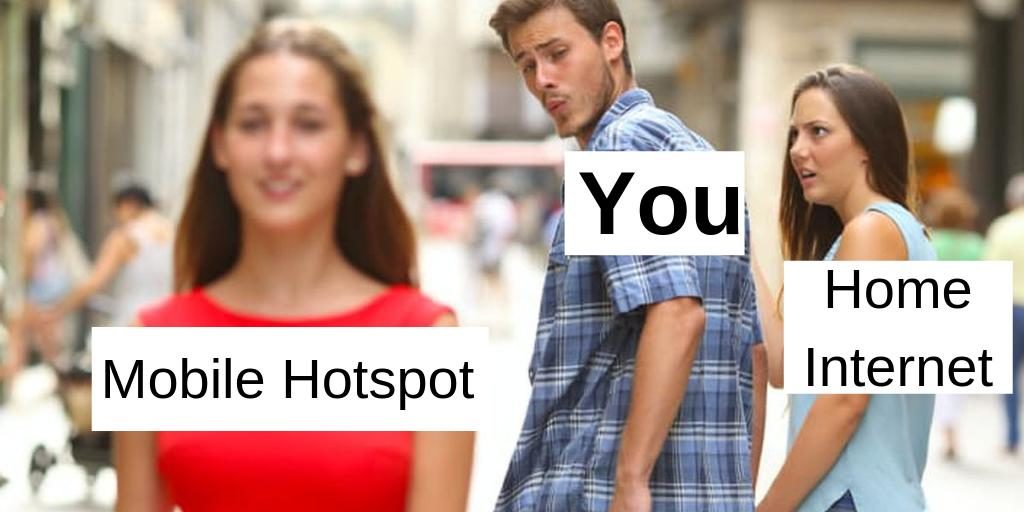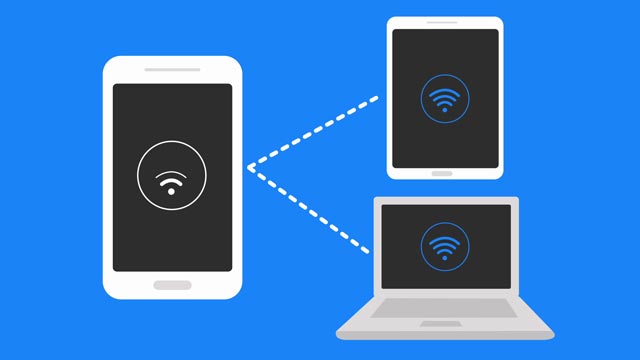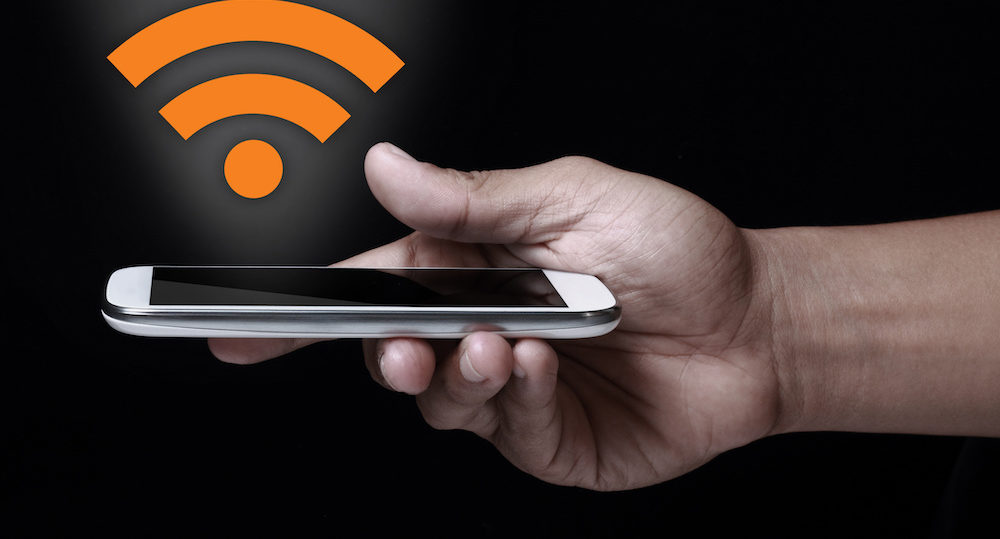These days we are accustomed to having internet access everywhere. Waiting in line at McDonalds? You can log into their WiFi. Out at the bar? You can most definitely log into their WiFi. Hell, I was traveling in Japan and one of their small tourist cities had public WiFi to log into for visitors. So what I’m saying here is that WiFi and internet are everywhere, and we consume it like crazy, especially at home.
Having internet access at home has become the norm, it’s almost become a right and not a privilege. In fact, one day my BFF was visiting my new apartment for the first time and she did what most people do when visiting a new home: she asked for my internet name and password. And although I stream and scroll social media like every other millennial out there (maybe even more so) I couldn’t give her my WiFi name and password because I don’t have home internet.
You might be thinking to yourself, “But SHERRI! How are you surviving with NO internet?!” Well, let me tell you how. I use my mobile internet and hotspot—and you’ll be pleasantly surprised to know it works just as well and is cheaper than paying for home internet. Because of the cost and ease of using my mobile hotspot, I really think everyone should ditch their home internet, and use a mobile hotspot. This guide will help you do just that.

What is a Mobile Hotspot
So what is a mobile hotspot? A mobile hotspot is a function on your smartphone you can turn on which allows other devices to connect to your internet/data supply from your cell phone carrier—in my case AT&T. You’re essentially sharing your mobile data included in your cell phone plan with other devices.
Mobile hotspots are different with each carrier and plan. You may have one already, but it’s possible it only runs on 3G data or slower. So before you cut the metaphorical home internet cord, make sure you have a mobile hotspot on your plan that offers high-speed data, or upgrade your plan to one that offers it. To use a hotspot, you also need to have a smartphone that’s hotspot capable.
How to Connect to a Hotspot

- Before you turn on your hotspot, create a name for it and set a password (just like you would do with your home internet access).
- Turn the WiFi on for the device you want to connect to the internet.
- Look for the hotspot name, and enter the password.
My Experience Using a Hotspot Over Home Internet
In the last few months I moved from a home with internet, to an apartment without internet. At the time, my new roommates said they just used their hotspots whenever they wanted to connect a device to the internet. At first I thought they were crazy—who would do that? But I said I’d give it a try and see how it went. Now, almost 6 months later I’m sold! We live in South Orange County, CA., which by normal standards is already pretty expensive, and when you calculate all the other bills I have, it makes so much sense to only pay for my cell phone bill.
I’m on my family’s cell phone plan: AT&T’s Unlimited Plus Multi Line plan. It comes with 10GB of high-speed hotspot use then slows to 128kpbs after that. Because 128kpbs is unbearably slow, I do have to track my hotspot usage more carefully than if I had home internet. However, there are a few things I do to keep my usage low:
- I use the unlimited high-speed data on my cellphone to stream Hulu, Netflix, other entertainment sites and music.
- I only connect devices to my hotspot when it’s required. For instance, when I have people over and we want to watch something on a screen bigger than the size of iPhone X, I’ll connect my smart TV to my hotspot.
- A few times a week I’ll connect my laptop to my hotspot when I need to work from home or send emails that I’d rather not send on my phone.
- We have an Amazon Echo that we connect to our hotspots when we want to listen to music (but other than that, our lovely Alexa is basically a paperweight).
Using my mobile hotspot this way, I have NEVER run out of high-speed hotspot data. So it’s 100% possible for you to do the same if your hotspot needs are low.
Money I Save
My family plan (AT&T Unlimited Plus Multi-Line) costs: $245/month. This cost is split up between seven people (yes I have a big family), so I only pay $35/month for 10GB of hotspot use, and unlimited high-speed data.
If I were to get home internet at $60/month split between my two roommates and I, I’d be paying an extra $20/month on top of my $35/month cell phone plan. That means I’m saving $240/year by just using my hotspot.
Hotspot Pros
- Cheaper than paying for home internet and a cell phone plan
- Simple to use
- Can use it anywhere your devices need access to internet
- Don’t need to install anything in your home (like a modem or wiring)
Hotspot Cons
- Not great for gamers or people who use a lot of data
- Hotspot data usually isn’t unlimited
- You may need to change carriers or plans to have hotspot access
- It’s difficult to use internet required devices like Google Home or Amazon Echo
- Need a hotspot-capable smartphone
Hotspot Savings
According to USA Today, the average household pays about $60/month for home internet, and between $30 and $60 for cell phone service. So you’re looking to pay between $90-$120/month for all your internet, data, and cell phone needs. That’s a big chunk of money. On the other hand, if you were just to use a hotspot for your home internet, on the expensive end you’d only be paying $85/month for 20GB of hotspot data. That’s a substantial amount of data, and you’d be saving up to $35/month (potentially more than 2x that).
Mobile Hotspot Plans
The graphic below shows cell phone plans that offer unlimited high-speed data with at least 10GB of high-speed hotspot use as well. These plans range from $50-$85/month. Keep in mind, if you get a family plan, the cost per month, per line, will go down.
Be sure to read the fine print of your plan. You may have a hotspot BUT it might only run at 3G speeds or slower
Let’s Talk Take
If you have low internet needs and are totally fine streaming content from your cell phone, using a hotspot for your home internet is a great idea. Your monthly bills will shrink and you’ll feel better knowing you’re only paying for what you use.
Ditching home internet for a mobile hotspot isn’t feasible for everyone. If you’re a gamer, you should not get rid of your home internet because you’ll definitely run out of high-speed hotspot usage. If you have family members at home who don’t have a phone yet and can’t use a hotspot, you should probably stick with home internet.














